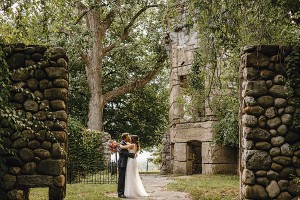When Homes Sweet Homes Become One

Happy young couple carrying couch in new home via Shutterstock
He can’t fathom why you love that curio cabinet full of Swarovski crystal figurines. You’re confused on why his leather recliner covered in duct tape patchwork is his pride and joy. Such is the life of a newly cohabiting couple. When the welcoming concept of mi casa es tu casa becomes a cold hard reality, things can potentially get complicated.
Before you don the boxing gloves and step into the ring, Kathie Chrisicos, president of Chrisicos Interiors, has some advice about how to combine household decor. And it all begins with a calm chat.
Take a Logical Approach
“Approach this topic very gently. Approaching it from a logical business perspective takes the conversation away from the personal,” she suggests. “Write down the objective and work with a dimensioned plan of the space and dimensions of the items you would like to keep. This makes the situation logical and easier to make decisions from that perspective first.”
While working room by room seems simple and easy to tackle, Chrisicos suggests starting with an overall plan. The first step is to review the entire home. Think about how many rooms you have, their requirements for furniture and decor, and make a list of what pieces you’ll need.
Make It a Matter of Style
Next up: a style discussion. Similar to a sense of humor, everyone thinks they have style. Talk about what you each believe your style is, then discuss and look at other styles to push boundaries out and explore possibilities. This is where you talk about color likes and dislikes (this is where you should mention how orange makes you nauseous) and build a color plan for all areas of the home—the painted areas, the upholstered furniture, the finish on the wood pieces.
“Let’s assume the couple has two distinct styles—one is contemporary and the other is more traditional,” Chrisicos says. “Blend the two styles into an eclectic style. You should also question whether the colors of the furnishings and well-loved possessions that each person is bringing into their new home work well together. You could have a really fun and unique décor.”
Consider the Time Frame
Chrisicos also recommends that should consider how long you’re planning on living in your new joint residence: “Is it long-term or an apartment that will be fun for a few years before the next big move?” Her advice for shorter-term digs: “Relax and make decisions that allow you to have fun and enjoy a unique décor for that period of time. This could be a time to experiment with blending.”
Choose What Makes the Cut
A sad fact is that you might have to say “goodbye” to that special piece that doesn’t capture your spouse’s affection. “That’s easier to do when the process is logical and written down,” says Chrisicos, noting that this lessens the emotion quotient. To help you both decide on what to keep and what to shed, ask yourselves: What’s the attachment? Why is it important to keep this piece? Does emotion outweigh a logical decision?
Once you’ve decided collectively that the velvet Elvis painting and the paisley ottoman should go, Chrisicos has a few options for your furniture farewell. “Share those pieces you have fond memories of with a friend or relative, so the furniture will have a second life or donate to a charity,” she says. “You could also store the piece for future use. Sometimes it’s never used, but the storing option allows for a delayed final detachment from that piece.”
Beyond the bookcases and floral couches, think of the new home you’re creating together and go from there.
“This is the beginning of a wonderful journey, developing a new shared style for your home,” she says. “In time, your blended style home will have so many new memories.” And hopefully his duct taped recliner won’t be in them.
What stories do you want to see in Boston Weddings? Send us tips at weddings@bostonmagazine.com.
Getting married? Start and end your wedding planning journey with Boston Weddings' guide to the best wedding vendors in the city.


